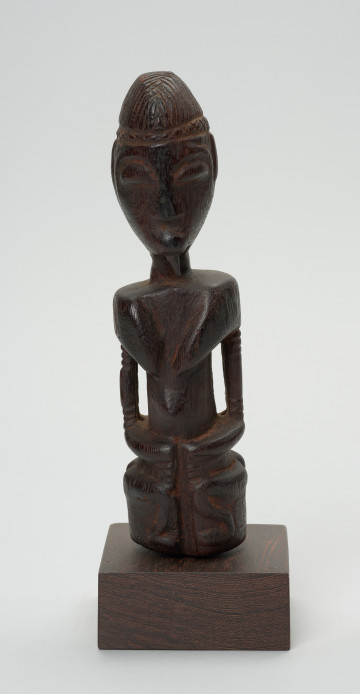
Figure - couple of ancestors
między 1901 — 1970
National Museum in Szczecin
Part of the collection: Collection of Dogonian art
The statue is made of a single piece of wood and depicts a man and a woman as separate yet complementary individuals who make the perfect couple. The husband and wife form a perfect and harmonious relationship. They are joined together for procreation, which sustains life. For the Dogon, marriage is a kind of contract between two families. The parents often agree between themselves while the potential spouses are still young. Before the children mature and are accepted as husband and wife, the fiancé's family must provide the family of future in-laws with gifts each year. The offerings are usually livestock, crops, bundles of brushwood, but money is also welcome. When the fiancé becomes a young man, he and his 'brothers' of the age group (tumo) must work in the fields of the girl's parents. Immediately before the marriage, the parents of both parties once again analyse the gifts given so far, the contribution of the young man's work and agree on the final sum of money that his family must give to the other party. All these dues are an attempt to compensate for the loss of their daughter. That is because Dogon marriages are patrilocal, meaning that the wife leaves the family home, sometimes even the village, and moves to her husband's family. Thus, one family loses a couple of working hands to the other. In the Dogon, there is no marriage ceremony; after paying all the fees, the young man becomes the girl's iga-biru (husband) and she - his ya-biru (wife). The woman accommodates her husband but eventually moves in with him only after giving birth to a child, who belongs to the father's family (ginna). The combination of the characters depicted and their similar size are meant to demonstrate the ideal union of a harmonious marriage.
Ewa Prądzyńska
Author / creator
Dimensions
cały obiekt: height: 79 cm, width: 20 cm
Object type
figure
Creation time / dating
Creation / finding place
Identification number
Location / status

między 1901 — 1970
National Museum in Szczecin

między 1951 — 2000
National Museum in Szczecin
około 1970
National Museum in Szczecin
DISCOVER this TOPIC
National Museum in Lublin
DISCOVER this PATH
Educational path